#klaus morphys
Explore tagged Tumblr posts
Text







All of my Ocs refsheet cuz why not
#art#artwork#creepypasta#my artwork#creepypasta fanart#fyp#digital art#creepy art#oc#rabit hunter#creepypasta oc#original character#oc art#artists on tumblr#crp#creepypasta rabit hunter#rose#eye#rabit#klaus morphys#aiden morphys
21 notes
·
View notes
Text
A few of my Resource book collections I have read lately.
The Oxford Companion to Aboriginal Art and Culture (Oxford Companions) 1st Edition

This unique publication provides a wide-ranging reference to indigenous Australian art, covering documented archaeological traditions, art styles of the early contact period and the nineteenth century, and the development of the contemporary Aboriginal and Torres Strait Islander art practices.
https://www.amazon.com/dp/product/0195506499?tag=sacreddestin-20
Two Steps Forward, Three Steps Back : A Wiradjuri Land Rights Journey By Gaynor MacDonald

letters to the Wiradjuri Regional Aboriginal Land Council on its 20th anniversary, 1983-2003
Tradition Today : Indigenous Art in Australia from the Collection of the Art Gallery of New South Wales2014 Revised Edition
written by Hetti Perkins, Cara Pinchbeck
Art Gallery of NSW | ISBN 9781741740875
Paperback

With a foreword by Michael Brand and an introduction by Hetti Perkins, the expanded and revised edition of this popular book includes nine new artists - Tony Albert, Jakayu Biljabu, Mirdidingkingathi Juwarnda Sally Gabori, Julie Gough, Ivy Pareroultja, Esme Timbery, Wingu Tingima, Harry Tjutjuna and Barrupu Yunupingu - and new works by Richard Bell, Destiny Deacon, Makinti Napanangka and Uta Uta Tjangala.
Using the rich collection of the Art Gallery of New South Wales, this book provides an important introduction to Indigenous art in Australia through the work of 86 artists across the continent, from remote areas to urban centres.
Contributors: George Alexander, Natasha Brook, Deborah Edwards, Hannah Fink, Vivien Johnson, Jonathan Jones, John Kean, Eric Kjellgren, Steven Miller, Howard Morphy, Hetti Perkins, Cara Pinchbeck, Luke Taylor, Wayne Tunnicliffe, Ken Watson
Artists:
Ian Abdulla, Tony Albert, Paddy Bedford, Richard Bell, Billy Benn, Jakayu Biljabu, Binyinyuwuy, Dawidi Birritjama, Mervyn Bishop, John Bulunbulun, Kevin Bunduck, Nym Bunduck, Robert Campbell Jnr, Clifford Possum Tjapaltjarri, Robert Ambrose Cole, Brenda L. Croft, Destiny Deacon, Dr David Malangi, Dr Pantjiti Mary McLean, Emily Kam Ngwarray, Kevin Gilbert, Julie Gough, Willie Gudabi, Philip Gudthaykudthay, Mithinari Gurruwiwi, Johnny Warangkula Tjupurrula, Roy Kennedy, Yvonne Koolmatrie, Anchor Kulunba, Long Tom Tjapanangka, Samuel Manggudja, Banduk Marika, Mawalan Marika, Wandjuk Marika, John Mawurndjul, Galuma Maymuru, Narritjin Maymuru, Ricky Maynard, Queenie McKenzie, Mirdidingkingathi Juwarrnda Sally Gabori, Tracey Moffatt, Sally Morgan, Wonggu Mununggurr, Mäw Mununggurr, Albert Namatjira, Eubena Nampitjin, Inyuwa Nampitjinpa, Makinti Napanangka, Mitjili Napurrula, Ningura Napurrula, Dula Ngurruwutthun, Jimmy Njiminjuma, Nyirlpirr Spider Snell, Lin Onus, Ivy Pareroultja, Otto Pareroultja, Rusty Peters, Gloria Tamerre Petyarre, Prince of Wales, Kutuwulumi Purawarrumpatu, Michael Riley, Elaine Russell, Shorty Lungkata Tjungurrayi, Ken Thaiday, Thanakupi, Rover Thomas, Esme Timbery, Wingu Tingima, Ronnie Tjampitjinpa, Uta Uta Tjangala, Mick Namarari Tjapaltjarri, Tim Leura Tjapaltjarri, Tjumpo Tjapanangka, Timmy Payungka Tjapangati, Harry Tjutjuna, Turkey Tolson Tjupurrula, Judy Watson, HJ Wedge, Pedro Wonaeamirri, Jabarrgwa Wurrabadalumba, Owen Yalandja, Lena Yarinkura, Barrupu Yunupingu, Munggurrawuy Yunupingu, r e a
https://www.artgallery.nsw.gov.au/shop/item/9781741740875/
Weaving: A Handbook of the Fiber Arts
by Shirley E Held
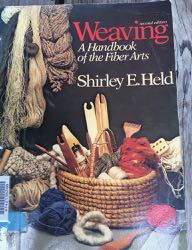
This book was an old but a goody, with some wonderful ideas on fibre art and weaving that assisted me in my projects.
The artistic and practical aspects of creating fabric are considered in discussions on weaving on the loom and by hand, spinning and coloring yarn, and designing material
"synopsis" may belong to another edition of this title.
https://www.abebooks.com/9780030226915/Weaving-Handbook-Fiber-Arts-Held-0030226910/plp
Australia’s emblems and Icons- flags
By Jack and Jenifer Barwick

This book gave me information on the Official Australian Aboriginal flag
Vitamin 3D New Perspective Sculpture and installations- Phaidon
http://www.artnet.com/magazineus/books/croak/vitamin-3D12-10-09.asp
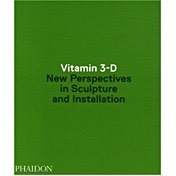
Sculpture Today-Judith Colllins
http://www.booktopia.com.au/sculpture-today-judith-collins/prod9780714857633.html?utm_source=bing&utm_medium=cpc&utm_campaign=Shopping%20Campaign(2)&utm_term=1101100031315&utm_content=All%20Products

Materiality- Whitechapel: Documents of Contemporary Art – Petra Lange-
Berndt (short essay crop version publication)
http://www.booktopia.com.au/materiality-petra-lange-berndt/prod9780262528092.html

How to write about Contemporary Art – Gilder Williams (chapter 3 fear of good writing)
http://www.booktopia.com.au/how-to-write-about-contemporary-art-gilda-williams/prod9780500291573.html
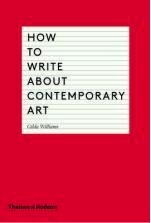
Artificial Hells - Participatory Art and the Politics of Spectatorship- Claire Bishop
http://www.booktopia.com.au/artificial-hells-claire-bishop/prod9781844676903.html
Installation Art – Claire Bishop
https://books.google.com.au/books/about/Installation_Art.html?id=o7FPAAAAMAAJ&redir_esc=y

The Art of Participation – Rudolf Frieling
http://www.goodreads.com/book/show/6262687-the-art-of-participation
Public Art (Now)- Clair Doherty
https://www.dymocks.com.au/book/public-art-now-by-claire-doherty-9781908970176/#.WQad9bGr3-Y
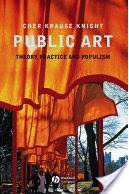
Public Art Theory Practice and Populism – Cher Krause Knight
https://books.google.com.au/books/about/Public_Art.html?id=qkxClDeTCbQC&redir_esc=y
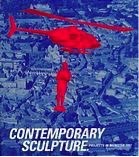
Critical Issues in Public Art - Harriet F. Senie and Sally Webster, Editors
http://www.harrietfsenie.com/critical-issues-in-public-art/
Contemporary Sculpture. Projects in Münster, 1997 (Germany) - Klaus Bussan; Kasper Koing; Florian Matzner.
http://www.worldcat.org/title/contemporary-sculpture-projects-in-munster-1997/oclc/37392437

This book historically looks at early battles between the Colonial Rule of Australia,the aboriginal tribes and white settlers/convicts. The first chapter Army of Occupation obviously looks at the question of the 1st fleet landing and settlement antagonising the local aborigines. Twin Battles of Sydney Battle of Vinegar Hill Battle of Bathurst Battle of Pinjarra Battle of Eureka stockade Battle of Battle Mountain
https://booksonwaraustralia.com/aboriginal-conflicts/1624-history-six-australian-early-battlefields-aboriginal-convict-conflict-9780207155956.html
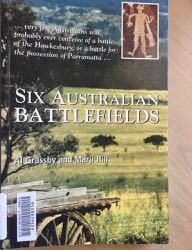
An alternative view of Australian history. Through accounts of four clashes, this book demonstrates the realities of life on the Australian frontier and through a retelling of the stories of Vinegar Hill and Eureka reminds the reader of the central place of resistance in Australia's past.
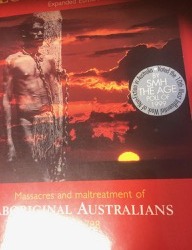
Blood on the Wattle draws together most of the information about the massacres of Aboriginal people which has been recorded in books and journals. Blood on the Wattle draws together, in a single volume, most of the information about the massacres of Aboriginal people which has been recorded in books and journals. It also creates a broad-based level of awareness of the scale of the massacres of Aboriginal people so that this dimension of Australian history can become part of the Australian consciousness. About the Author Bruce Elder is an award-winning journalist and writer who has been involved in the writing of more than 50 books, including the Macquarie Dictionary and The A - Z of Who is Who in Australia's History. He is a journalist with the Sydney Morning Herald specialising in travel and popular culture.
https://www.booktopia.com.au/blood-on-the-wattle-bruce-elder/prod9781741100082.html

"Judy Watson is one of Australia's leading contemporary artists. Her art explores territory that includes the dispossessed Indigenous Australians with whom she shares a family history and heritage. Judy Watson's art is intense and sublime in its physicality." "Blood language is a beautifully illustrated pictorial exploration of some of Judy Watson's seminal canvases, works on paper, sculptural projects and artist's books. Judy Watson imparts the artist's ideas and writer Louise Martin-Chew gives another insight into the artist's practice."--Jacket.
http://www.worldcat.org/title/judy-watson-blood-language/oclc/436950274
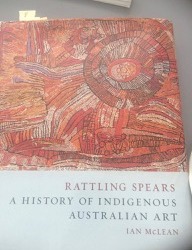
Large, bold and colourful, Indigenous Australian art has impressed itself on the contemporary imagination. But it is controversial, dividing the stakeholders from those who smell a scam. Whether the artists are victims or victors, there is no denying their impact in the media and on the art world and collectors worldwide. How did it become the most successful Indigenous art in the world? How did its artists escape the ethnographic and souvenir markets to become players in an art world from which they had been barred? Superbly illustrated, and rich in detail and critical analysis, this book provides the first full historical account of Indigenous Australian art and shows that there is much more to the art than large colourful canvasses. About the Author Ian McLean is Senior Research Professor of Contemporary Art at the University of Wollongong and an Adjunct Professor at the University of Western Australia. His previous books include Double Desire: Transculturation and Indigenous Art (2014), How Aborigines Invented the Idea of Contemporary Art (2011) and White Aborigines: Identity Politics in Australian Art (2009).
https://www.booktopia.com.au/rattling-spears-ian-mclean/prod9781780235905.html

Floating Life: Contemporary Aboriginal Fibre Art
Contributing authors include Diane Moon, Diana Wood Conroy, Anna Haebich, John Kean, Julie Ewington, Bruce McLean, Lynne Seear 160 pages paperback colour illustrations
'Floating Life' highlights the importance of fibre within Aboriginal culture, and the Gallery's unique collection of more than 300 fibre objects. Included are commissioned pieces by key artists as well as acquisitions from established and emerging talents. There are woven fibre pieces, three-dimensional works with connections to the objects, and paintings illustrating processes and stitches used.
Banumbirr (the Morning Star), water, and the notion of movement through time and place are major themes. Water defines pathways and points of connection in Aboriginal life and marks important creation sites associated with specific woven objects. Spirit figures, ceremonial poles, dance objects, body adornment and useful nets and traps — ranging from small and delicate to large-scale — reflect variations on tradition, whereas exciting contemporary explorations are embodied in the found materials used by Lorraine Connelly-Northey. An in-depth view of the work of artists such as Jonathan Jones, Gulumbu Yunupingu, Shirley MacNamara, Yvonne Koolmatrie, Lena Yarinkura and Alan Griffiths recognises their role in forging important new directions.
https://www.qagoma.qld.gov.au/whats-on/exhibitions/past-exhibitions/floating-life

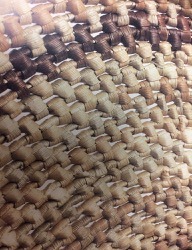

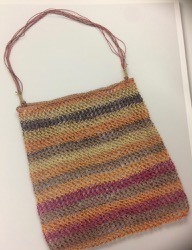
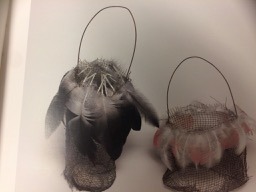
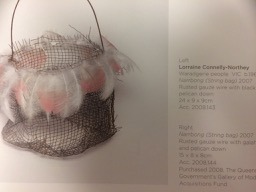
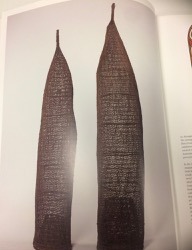
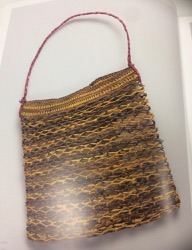


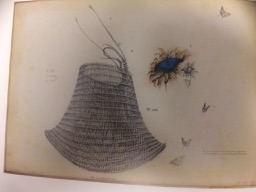



https://www.sellingyarns.com/2013/
Selling Yarns 3: Weaving the nation's story was a four-day event that presented a conference, a market day, workshops, an exhibition and associated activities program, and launched the inaugural Indigenous Art Film program. As the premier national forum for Indigenous textile and fibre in the country it was supported by the Centenary of Canberra, drawing people to the nation's capital from across the country.
Thirty Indigenous communities and art centres and 134 artists from every state and territory in Australia converged in Canberra to participate in Selling Yarns 3: Weaving the nation's story. Indigenous artists and elders, and art administrators, came together and participated as speakers, workshop facilitators and market stall holders to share their stories, exchange their knowledge and skills, and to trade. They opened their hearts to each other and to other conference delegates and visitors. As Tim Growcott so eloquently stated post conference:
"An authentic spirit of reconciliation coursed strongly throughout the four days, with so many stories and examples of practical collaborations and life- changing projects. The conference was a recognition of the important and sensitive work being accomplished by like-minded creators, forging links with the living past and forming models for healing into the future."
The project was a huge success, inspiring artists and creating strategic alliances between Indigenous communities across Australia. There has been significant cross cultural engagement and inspiration with international Indigenous artists and culture which paves the way for lasting relationships with opportunities to develop further collaborations and joint projects. Establishing dialogue and sharing cross-cultural exchanges with international artists, curators and researchers has placed Australian Indigenous textile practice within the broader international arena.
youtube
1 note
·
View note